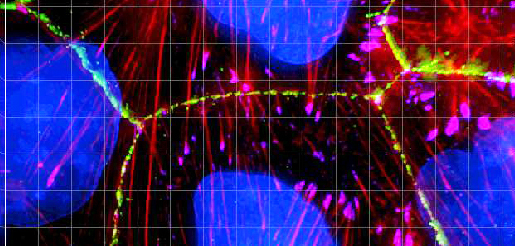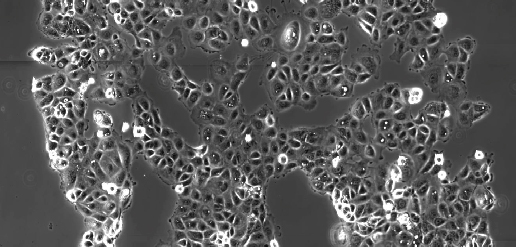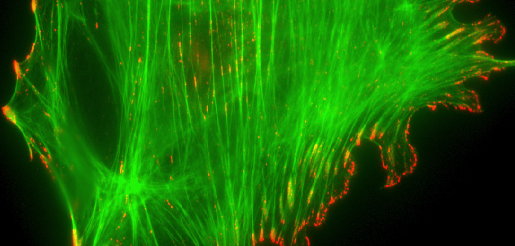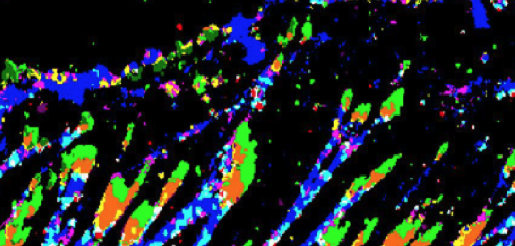
Caco-2 cells labeled for tight junction molecule cingulin (green), actin (red), vinculin (pink) and DNA (blue).

Epithelial cells growing on a patterned adhesive surface with the shape of the Weizmann Institute tree.

Desmosomes in mouse tongue epithelium (by transmission electron microscope).

Porcine aortic endothelial cell, double-labeled for actin (green) and phospho-tyrosine (red).

“Molecular composition map” of focal adhesions and stress fibers.

Myeloma cancer cell responding to shear flow (by scanning electron microscope).
Dr. Ariel Livne
Investigating cell mechanosensitivity through cyclic force application
The mechanical environment of an adherent cell is vital to its structure, physiological state, and fate. Here, we study the behavior of cell mechanoresponsive elements not as they actively apply force to the extracellular matrix, but rather as they respond to external force perturbations. This is done by plating cells within an elastic chamber, which is subjected to uniaxial cyclic stretch at a controlled strain and frequency. By combining live-cell microscopy with this cyclic stretch, we are able to characterize cytoskeletal changes brought about by the external mechanical perturbations. Of particular interest are the dynamics of stress fiber reorientation, following the application of force.

Cell and stress fiber reorientation are hallmarks of cyclic force application.
REF-52 cells plated on a fibronectin-coated polydimethylsiloxane (PDMS) substrate, reorient from a random orientation (a) to a well-defined angle (b), following ~6 hours of 10%, 1 hz cyclic stretch in the horizontal direction. In conjunction, stress fibers also reorient to the same angle (dashed yellow lines) as revealed by phalloidin immunofluorescence staining of F-actin (c).
